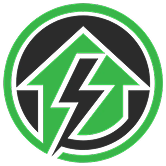Off-Grid Living Made Easy: How to Power Your Cabin, Camper, or Tiny Home
Introduction
Dreaming of escaping the grid — whether that’s a cabin in the woods, a cozy camper, or a minimalist tiny home? You’re not alone.
More people than ever are choosing off-grid living for freedom, self-reliance, and sustainability. But powering your space efficiently requires the right mix of solar energy, batteries, and inverters.
At Build The Power, we make it simple to design your own off-grid energy system with premium Solar Kits, Portable Power Stations, and Inverters.
1️⃣ Assess Your Power Needs
Before choosing equipment, start by listing your essential devices — lights, refrigerator, water pump, laptop, or heater.
Estimate your daily energy use in watt-hours (Wh) using this formula:
Watts × Hours of use = Watt-hours per day.
Add them up to determine your total daily consumption. For most tiny homes or small cabins, that’s 2–5kWh per day.
2️⃣ Choose a Complete Solar System
For stationary off-grid living (like a cabin or tiny home), a complete solar system is the best long-term solution. These kits include panels, inverter, controller, and battery storage — all designed to work together seamlessly.
Benefits:
-
Generates free, renewable energy year-round.
-
Scalable for future expansion.
-
Minimal maintenance.
👉 Explore Complete Solar Systems for reliable off-grid power.
3️⃣ Use Portable Power Stations for Mobility
If you’re living in a van, RV, or mobile setup, portable power stations are a game-changer. Compact yet powerful, they can charge from solar panels or wall outlets and provide plug-and-play power anywhere.
Best For:
-
Campers and RVs
-
Mobile work setups
-
Weekend cabins and adventure vans
👉 Browse Portable Power Stations for flexible off-grid energy.
4️⃣ Add Battery Storage for Nighttime Use
A reliable off-grid system isn’t complete without battery storage. During the day, your solar panels charge your batteries — then at night, you draw from that stored energy.
Recommended Battery Capacity:
-
Tiny home: 5–10 kWh
-
Cabin: 10–20 kWh
👉 Check our Battery Storage Systems to keep your power flowing 24/7.
5️⃣ Use Power Inverters for AC Appliances
Most solar systems store energy in DC (direct current), but your household devices run on AC (alternating current). That’s where a power inverter comes in.
Benefits of Pure Sine Wave Inverters:
-
Safe for sensitive electronics.
-
Efficient power conversion.
-
Essential for off-grid homes.
👉 Explore Power Inverters.
6️⃣ Supplement with a Generator for Backup
Even the best off-grid systems need a backup plan for extended cloudy periods. A small generator can recharge your batteries or directly power essential loads when sunlight is limited.
👉 Browse our Generators for hybrid off-grid setups.
Example Setup: Tiny Home Off-Grid System
| Component | Recommendation | Example Size |
|---|---|---|
| Solar Panels | 4–6 high-efficiency panels | 1.5–3kW |
| Battery Bank | Lithium battery system | 10kWh |
| Inverter | Pure sine wave | 3kW |
| Backup Generator | Dual-fuel model | 3–5kW |
Conclusion & Call to Action
Off-grid living doesn’t mean sacrificing comfort or convenience — it means taking control of your power. Whether you’re building a tiny home, camping off-grid, or setting up a remote cabin, the right solar system gives you the freedom to live sustainably and independently.
👉 Start your off-grid journey today:

